How does cannabis work?
Cannabis does wonders to the body, mind, and spirit. Learn how in our crash course below!
The Endocannabinoid System
The endocannabinoid system (ECS) plays a key role in maintaining homeostasis, which is a state of balance in the body and mind. Cannabinoids like CBD and THC interact with the ECS, contributing to its function.
The Endocannabinoid System's Concentrations of Receptors
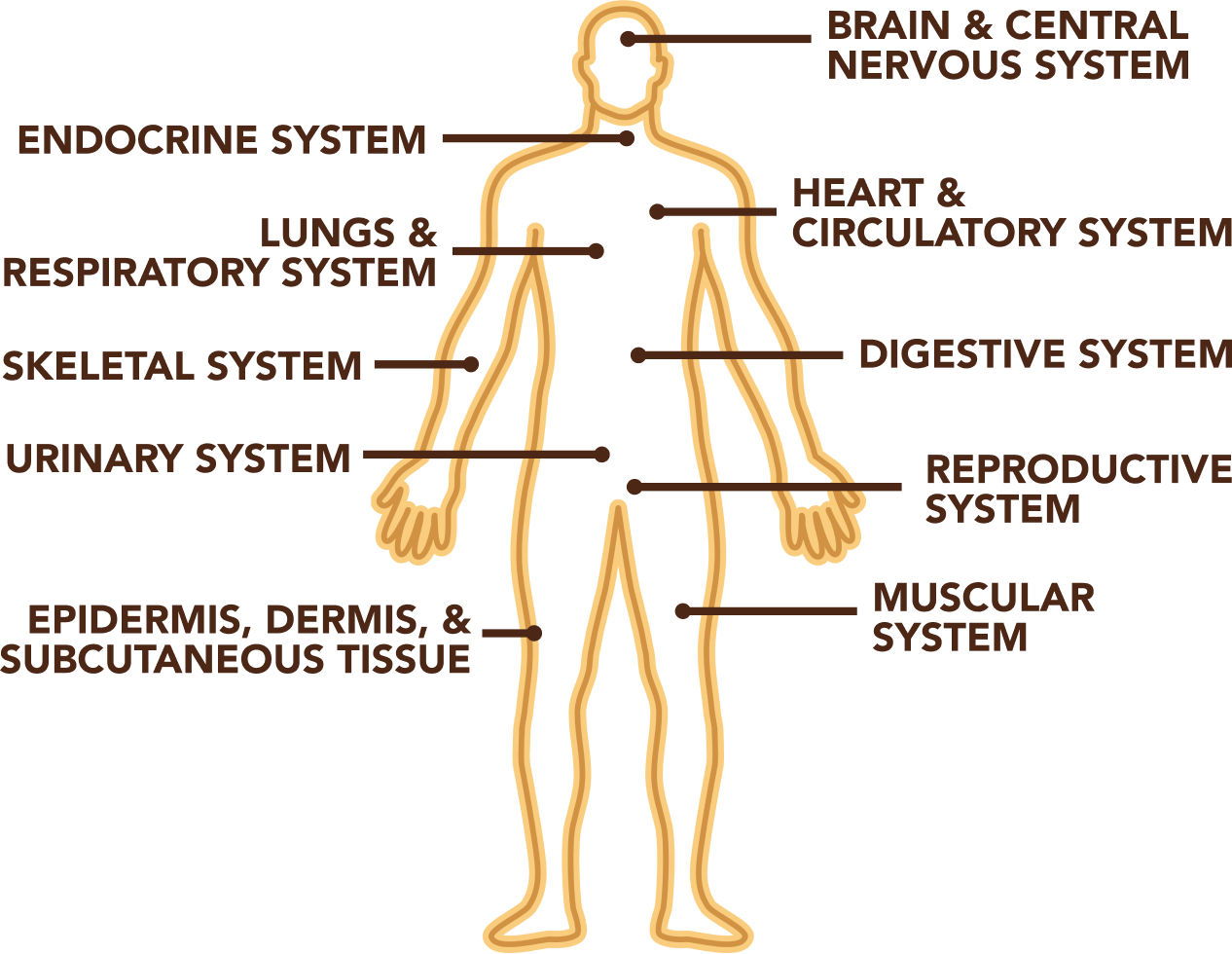
The endocannabinoid system (ECS) works to maintain homeostasis, a state of balance among the body and mind and is one of the most important systems involved in the establishment and maintenance of human health.
Phytocannabinoids, like CBD and THC, are plant-made cannabinoids that may help the endocannabinoid system to maintain homeostasis, which may improve overall well-being.
What are Cannabinoids?
Cannabinoids like CBD and THC are compounds that interact with the ECS, helping with balance and regulation, and are largely responsible for the therapeutic effects of cannabis products.

CBD
Cannabidiol
CBD is the most abundant cannabinoid in hemp, and is often associated with a sense of calm, relief, and wellness.

CBG
Cannabigerol
CBG offers benefits similar to CBD, but is often more associated with focus and energy.

CBN
Cannabinol
CBN is described as the 'sleep cannabinoid' due to it's link with relaxation and sleep support.

THC
Tetrahydrocannabinol
THC, also found in hemp, is the most abundant cannabinoid in marijuana, and is associated with a wide variety of benefits including relief and enjoyment.

How do I Use CBD and THC?
Cannabinoids, like CBD and THC, are used for a wide range of applications, and can be taken internally or used topically.
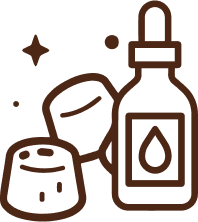
CBD and THC used internally enter the bloodstream and can support the balance and wellness of the entire body and mind (homeostasis).

CBD and THC used topically interacts with local endocannabinoid receptors to provide targeted relief.
How much CBD or THC should I take?
CBD and THC dosage is unique to each individual, and the initial process is about finding your ideal personal dosage.
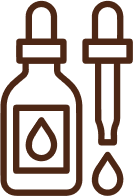
Dosage for CBD: When it comes CBD, consistency is key. To make that easier, all our oils have measured droppers, so that you can precisely taper up or down, as you're finding your ideal personal dosage.

Dosage for THC: With THC, "start low and go slow". THC dosage can vary depending on tolerance and desired effect. A low dose is recommended for beginners and is around 2.5-5mg, while experienced users may take 10-20mg+.
Our Product Offerings in
Miligrams THC Per Serving
CBD
dominant
THC
dominant
0mg THC
Per Serving
Broad-Spectrum
Omg THC / Serving
Broad Spectrum products offer all the benefits of CBD, but without the THC.
0.5-2mg THC
Per Serving
Full-Spectrum
0.5-2mg THC / serving
Full Spectrum products deliver the benefits of cannabis, but without the high.
2.5mg THC
Per Serving
Microdose
2.5mg THC / serving
Microdose products offer a lightly perceptible THC experience to enhance creativity, mood, and rest.
5-20mg THC
Per Serving
THC-Dominant
5-20mg THC / serving
THC-dominant products deliver a genuinely psychoactive THC experience, with dosages ranging from 5-20mg+ THC/serving.
What is Sativa, Hybrid, & Indica?
Sativa, Hybrid, & Indica are cannabis strain types associated with unique combinations of cannabinoids and terpenes, that lead to different user experiences.

Sativa
Uplifting & Energizing Effects

Hybrid
Balancing and Calming Effects

Indica
Relaxing and Sedating Effects
What do the THC ratios mean?
THC ratios indicate the milligrams of CBD, CBG, or CBN relative to THC in a product. We craft intentional pairings to provide diverse benefits and experiences.

Our 1:0 THC ratios provide a THC-only experience for those looking for a cannabis journey without the effects of CBD, CBG, or CBN.

Our 1:1 THC ratios provide an equal mix of THC and CBD, CBG, or CBN, for a balanced synergy of psychoactive effects alongside benefits like relaxation, relief, and sleep support.

Our 2:5 THC ratios offer 20mg of CBD and 8mg of THC per gummy, which is a great mid-level dosage of both THC and CBD.

Our 1:25 THC ratios deliver 25x as much CBD as THC, and 5-20mg of THC per gummy, which creates a unique THC experience that includes highly therapeutic levels of CBD.
What are Terpenes?
Terpenes are aromatic compounds that play an important role in cannabis' distinct smells, flavors, and therapeutic effects.
Common Terpenes in Cannabis

Linalool
(also found in Lavender)

Eucalyptol
(also found in Eucalyptus)

Carene
(also found in Cypress)

Beta-Caryophyllene
(also found in Clove)

Myrcene
(also found in Mangos, Thmye, and Lemongrass)

Limonene
(also found in Lemons, Limes, Oranges)

Pinene
(also found in Rosemary, Basil, and Conifers)
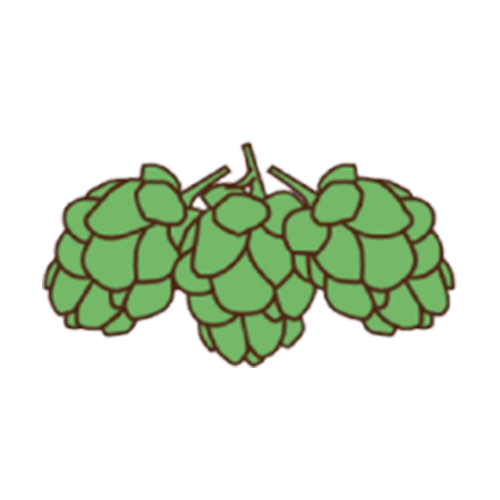
Humelene
(also found in Hops)
What is Live Resin?
Live resin extracts are made with cannabis that's frozen immediately after harvesting, which preserves the unique expression of terpenes in each strain. Created for cannabis connoisseurs and new users alike.
What is the Entourage Effect?
Cannabinoids and Terpenes Working Together
The entourage effect refers to the synergy that occurs when CBD or THC is combined with other cannabinoids, terpenes, and flavonoids.
The Entourage Effect
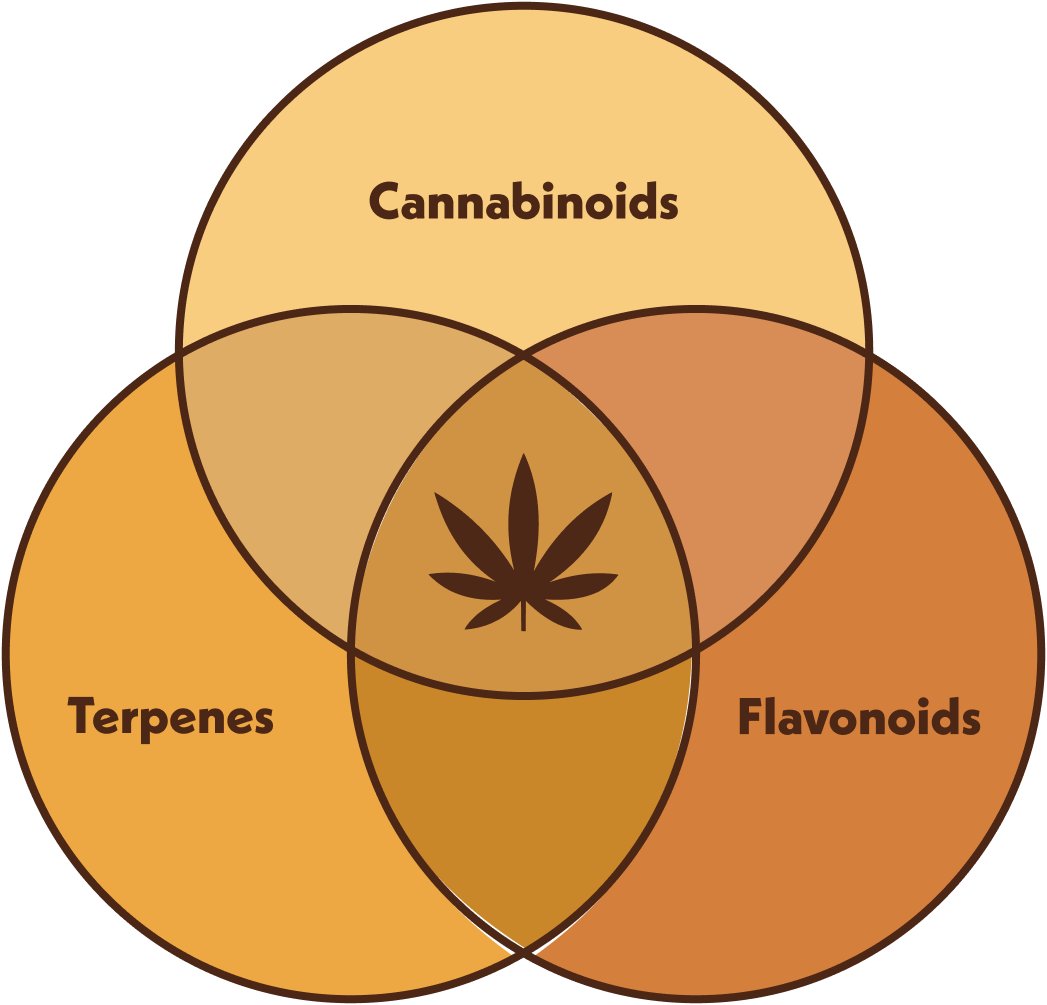
We formulate all of our cannabis products for maximum entourage effect, so you can find your groove.




